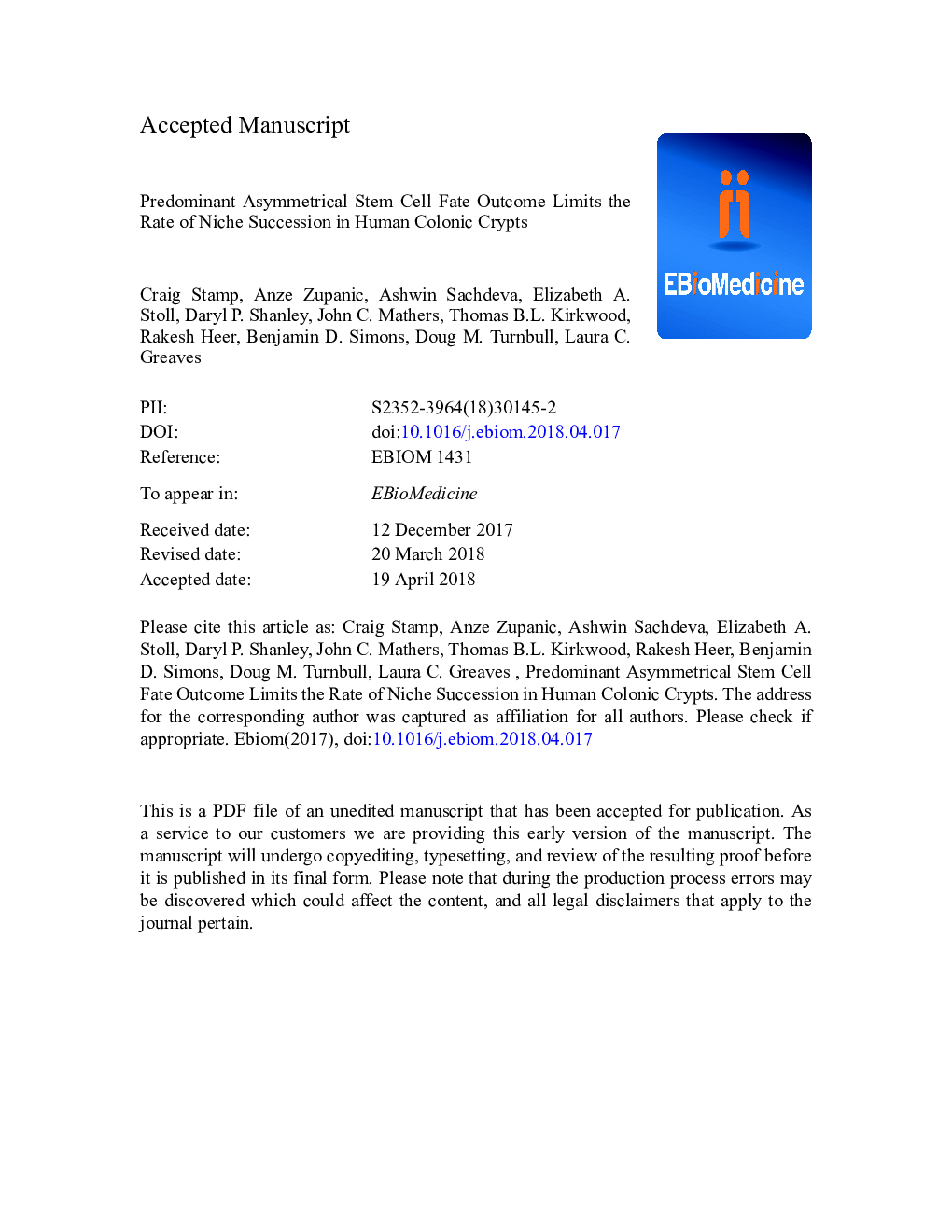| Article ID | Journal | Published Year | Pages | File Type |
|---|---|---|---|---|
| 8437291 | EBioMedicine | 2018 | 32 Pages |
Abstract
Stem cell (SC) dynamics within the human colorectal crypt SC niche remain poorly understood, with previous studies proposing divergent hypotheses on the predominant mode of SC self-renewal and the rate of SC replacement. Here we use age-related mitochondrial oxidative phosphorylation (OXPHOS) defects to trace clonal lineages within human colorectal crypts across the adult life-course. By resolving the frequency and size distribution of OXPHOS-deficient clones, quantitative analysis shows that, in common with mouse, long-term maintenance of the colonic epithelial crypt relies on stochastic SC loss and replacement mediated by competition for limited niche access. We find that the colonic crypt is maintained by ~5 effective SCs. However, with a SC loss/replacement rate estimated to be slower than once per year, our results indicate that the vast majority of individual SC divisions result in asymmetric fate outcome. These findings provide a quantitative platform to detect and study deviations from human colorectal crypt SC niche homeostasis during the process of colorectal carcinogenesis.
Related Topics
Life Sciences
Biochemistry, Genetics and Molecular Biology
Cancer Research
Authors
Craig Stamp, Anze Zupanic, Ashwin Sachdeva, Elizabeth A. Stoll, Daryl P. Shanley, John C. Mathers, Thomas B.L. Kirkwood, Rakesh Heer, Benjamin D. Simons, Doug M. Turnbull, Laura C. Greaves,
